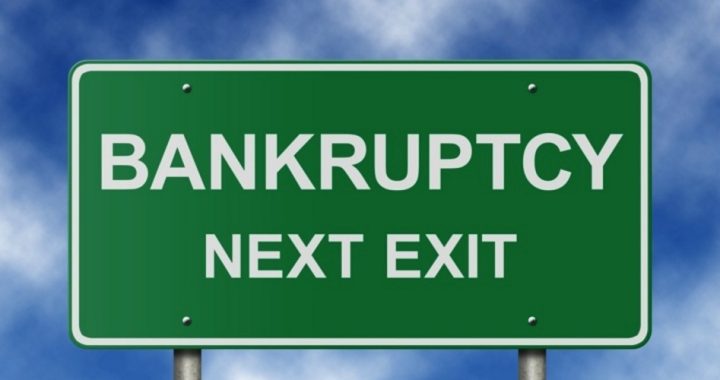
Back in February 2008, Vallejo, California, was in desperate shape. Councilwoman Stephanie Gomes saw what was coming: “Our financial situation is getting worse every single day. No [one] wants to declare bankruptcy, but if you’re facing insolvency, you have no choice,” she said at the time. Two months later her council voted 7-0 to declare Chapter 9 bankruptcy. In that two month period the city’s budget shortfall ballooned from $9 million to $15 million despite cuts to museums, libraries, senior centers, and other publicly supported services like road repair. Now, according to Moody’s Investors Service, the city is on the verge of its second bankruptcy.
A close look at the city’s finances at the time indicated what the city council was up against: With a budget of just $80 million, it owed $53 million to bondholders and another $220 million in unfunded liabilities for the city’s generous health benefit and retirement plans for its police officers, firemen, and other city workers.
And what of those pension plan beneficiaries? Never before had a judge ruled that labor contracts can be broken in a Chapter 9 bankruptcy until U.S. Bankruptcy Judge Michael McManus ruled in March 2009 that Vallejo could do so. Following that ruling two unions agreed to renegotiate. Two others didn’t. CalPERS [the California Public Employees’ Retirement System], the custodian of funds for those two plans, said it would not negotiate because California state law makes it a part of the state and therefore it cannot be forced to negotiate, regardless of McManus’ ruling. Said Gomes: “We realized we did not have the time or the money to take on a giant behemoth like CalPERS.”
So, leaving the police and firefighters’ plans alone, Vallejo decided to do the best it could by cutting elsewhere. It cut its police department from 145 to 80, it left three of its nine fire stations closed, and cut street maintenance to the bone. The results were predictable: potholes increased along with burglaries and homicides. Last year there were more than two dozen homicides compared to just seven in 2006.
Residents are leaving. Wrote Russell Zellers, a longtime resident, “Some people in my neighborhood are voting with their feet and leaving Vallejo. If things continue along the present course, I may not be far behind them.”
The retirees currently receiving checks from CalPERS, however, are doing just fine. Those who retired in the last five years are receiving annual pensions of more than $100,000. Under the CalPERS agreement, police and firefighters can retire at age 50 with as much as 90 percent of their last year’s salary, for the rest of their lives.
The city exited its first bankruptcy in 2011, but the reprieve may be short-lived. The city’s payments to CalPERS that year were just over $11 million a year, or about 14 percent of the city’s annual budget. Last year they jumped to $15 million, or about 18 percent of budget. Looking ahead, city officials are expecting payments to CalPERS to jump by at least another 30 percent, threatening to put Vallejo into another death spiral.
Said the city’s finance director, “Our five-year business plan was based on things we knew. Now we have to figure out a way to pay for these new CalPERS rates. Every time we react to the last rate change they impose, they come up with another one.”
The very agency that refused to negotiate during the city’s first bankruptcy is now a primary cause of the next one. Moody’s Investors Service is watching Vallejo very closely. According to Moody’s,
Vallejo substantially restructured its compensation structure, including significant cuts to retiree health care benefits, but by failing to address [its CalPERS] pension liabilities it remains vulnerable to increasing annual payments….
Vallejo now faces the risk of a second bankruptcy if its finances continue to degrade.
Moody’s noted further that the city’s reserves are just five percent, and that by 2015 its budget deficit could reach $9 million “without corrective measures.”
But denial is the watchword among the current city council members, only one of whom remains from the 2008 council that voted for the first bankruptcy. Deborah Laucher, the city’s finance officer, effused confidence: “We are not on the brink of [a second] bankruptcy. We’re not going there.”
Typical was the council’s response to this year’s $5.2 million budget gap: It agreed to a bookkeeping entry reflecting a pending agreement with city unions for labor cuts and a future cap on health benefits. And of course, the city is enjoying the $12 million coming in from that new sales tax increase which they are no doubt adjusting upward in future years reflecting optimism about the city’s reviving economy.
The next bankruptcy will give those council members another opportunity to confront the CalPERS “behemoth.” If they shy away again, the death spiral could very well force yet another bankruptcy a few years down the road. In the meantime, the retirees will continue to get their checks from CalPERS.
A graduate of Cornell University and a former investment advisor, Bob is a regular contributor to The New American magazine and blogs frequently at www.LightFromTheRight.com, primarily on economics and politics.



